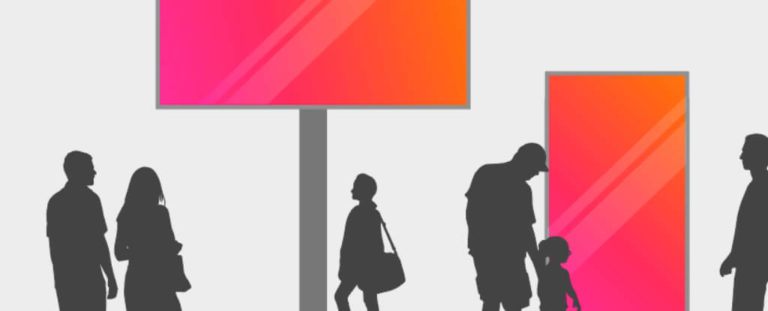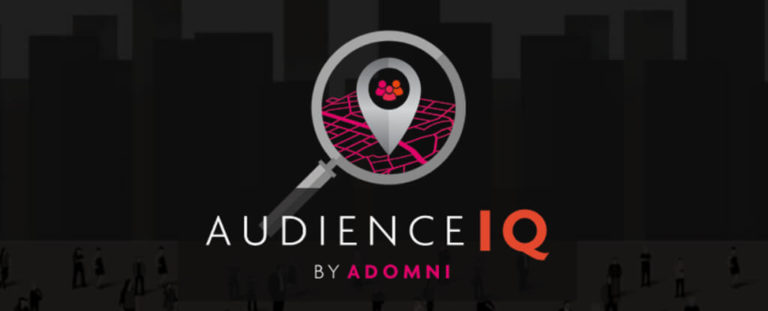Digital Out-of-Home: A Re-Emerging Medium for Franchise Brands
By Steve Schildwachter for Franchising.com
Published: January 11, 2021
Digital out-of-home is what you might call a “re-emerging medium.”
You can’t call it an “emerging medium” because it’s signage, the oldest form of advertising there is.
“Re-emerging,” however, is appropriate because digital out-of-home has caught up to modern ad standards. And it will be a critical way to connect with re-emerging consumers getting out and about in 2021 after the quarantine of 2020.
What is digital out-of-home? Often abbreviated as DOOH, it includes digital billboards of all sizes, as well as specialized placements like office building elevators, gas station pumps, taxis, and doctors’ offices. Industry estimates are that about one-third of all out-of-home inventory is digital.
Although digitization means replacing ink and paper with lights and pixels, it also permits wider delivery of video advertising. To that point, the industry group Digital Place-Based Advertising Association (DPAA) touts the slogan “Video Everywhere.”
The DPAA’s president, Barry Frey, would admit that digital out-of-home faced headwinds during a year when people weren’t out-of-home as much, but saw some bright spots. “Digital out-of-home worked well for advertisers who used it in 2020,” Frey said. “Due to increased digital capabilities and DOOH programmatic, the medium now allows marketers to change messages, locations, venues, and targets instantly according to fast-changing conditions.” He also reports that 2020 was a year when vendors, agencies, and tech companies collaborated on improving digital and programmatic infrastructure. The DPAA has led these initiatives.
The main improvements were leveraging technology to make the medium easier to use. Digital out-of-home, like digital online ad space, is increasingly bought and sold programmatically, allowing for the same ability to plan and buy at scale. The difference is that programmatic online connects brands and consumers on a one-to-one basis, while programmatic digital out-of-home connects “one-to-many,” in Frey’s words.
That leads to one of the biggest questions on any marketer’s mind: How is digital out-of-home measurable? Two large players point to mobile phone location data. Dan Levi, CMO at Clear Channel Outdoor, explains that “Mobile location data allows us to measure audiences, but also consumer behavior, anonymously and in the aggregate.”
Ian Dallimore, Vice President of Digital Growth at Lamar Advertising, one of the largest outdoor advertising companies, adds, “Mobile data gives us the ability to capture anonymous device IDs, see where people are moving through the marketplace, and know if they end up at your store or a competitor’s.”
What that means for a franchise brand: Instead of placing billboards within a certain radius around your business, you can place digital messages on routes frequented by consumers who shop your category or your competition.
RE/MAX, the real estate franchisor, used mobile location data to identify house hunters and place messages along their journeys. “Normally, they would put up messaging around weekends, when open houses are held, but with this kind of data we found house hunters where they were, increasing attendance at open houses,” said Dallimore.
In the same way mobile location data powers measurability, programmatic technology adds versatility, such as triggering messages when the temperature rises to a certain number. “On a hot day,” says Raising Cane’s CEO Todd Graves, “we put up lemonade at certain times of day and my lemonade sales go up. The [out-of-home] industry is getting better on the digital side.”
That suggests creative possibilities. Dean Ferenac, Managing Partner at Match MediaWorks, observes: “Many DOOH screens are larger than life in size, while other placements may offer multiple screens in close proximity to one other. Creative teams should understand how to make the most of these highly visible, non-skippable video opportunities – and push to go beyond repurposing existing video or banner ads.”
By the same token, one thing to keep in mind is digital out-of-home’s complexity. Historically, there have been inconsistent formats and production standards, varying by vendor. Two things are changing. One is that most sellers have allowed agencies and tech partners to list their inventories collectively in common platforms so buyers can choose the locations that work best for their business, regardless of who’s selling.
“With programmatic technology, a brand marketer has the ability to plan according to their campaign parameters across the screen inventory of many media owners,” says Jonathan Gudai, CEO of the digital out-of-home planning and buying platform Adomni. “That was very difficult to do in the past, because the software did not exist to plan and buy the entire market from one place. But in the last two or three years, digital out-of-home media owners and technology leaders have come together to make their inventory available in an easy and centralized way.”
The other is that buyers can plan digital out-of-home alongside other digital media. “Digitization introduces DOOH to the digital marketer, and is additive to digital advertising online, mobile, and in social,” explained Jim Wilson, CEO of Talon, an agency specializing in out-of-home. “OOH gets to be part of the omnichannel campaign.”
Wilson adds that most ad agencies have recognized these advantages. “Regional and local agencies are incredibly innovative, easily working across platforms.”
Read the full story on Franchising.com
To get the latest updates on out of home advertising, digital marketing and technology, follow us on:
Or sign up for our newsletter.






